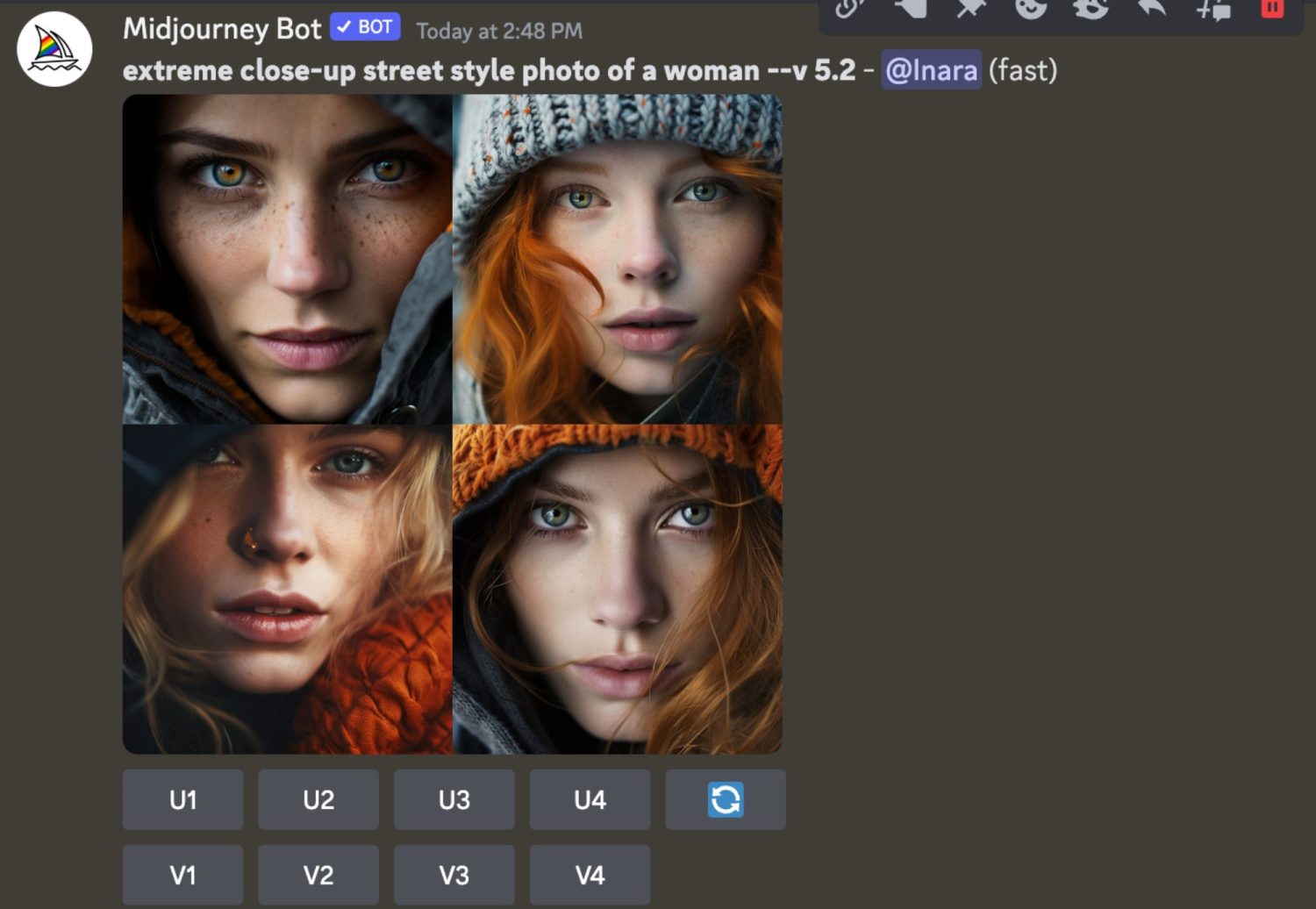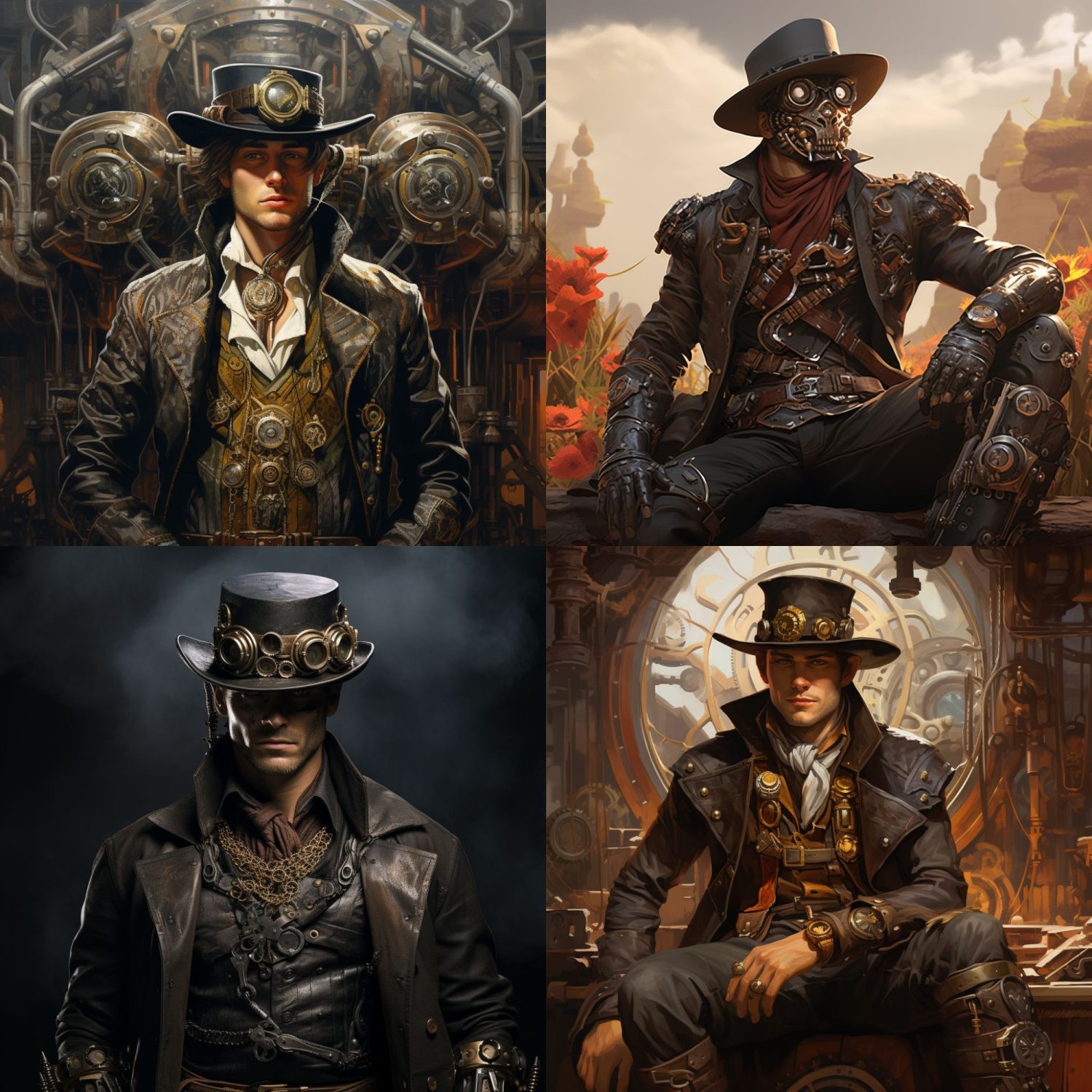Exploring AI Art Generators: the Similarities and Differences of AI Prompts Vs. Parameters
As a photographer, I found AI prompts and parameters confusing when I started working with AI art generators.
 001 – Screenshot and AI Artwork by Kent DuFault
001 – Screenshot and AI Artwork by Kent DuFault
Artificial Intelligence (AI) has made significant strides in recent years with the development of increasingly advanced AI models.
One critical aspect of these models is the interplay between prompts and parameters. Prompts and parameters are fundamental components that guide AI systems’ behavior and output. This essay will delve into the similarities and differences between AI prompts and parameters, shedding light on their respective roles and their impact on an AI system’s performance and behavior.
[Note: If you want to learn how to use Midjourney, click this link (includes a limited-time discount for our readers): Get Phil Steele’s ‘Synthetic Photography Masterclass’]
 002 – Screenshot, AI Artwork, and Graphics by Kent DuFault.
002 – Screenshot, AI Artwork, and Graphics by Kent DuFault.
The red arrow (above) points to a prompt, and the blue arrow (above) points to a parameter.
The Basics of AI Prompting
 003 – Screenshot, AI Artwork, and Graphics by Kent DuFault
003 – Screenshot, AI Artwork, and Graphics by Kent DuFault
The red arrow in image 003 depicts a written prompt. With the use of prompts, think of it as describing a scene for your camera.
Important: AI prompts serve as an AI system’s initial input or instruction.
These prompts can take various forms, including text, images, or even voice commands. Prompts are designed to provide context and direction to the AI model, shaping the output it generates.
 004 – Screenshot, AI Artwork, and Graphics by Kent DuFault.
004 – Screenshot, AI Artwork, and Graphics by Kent DuFault.
My prompts are still in the formula, but Midjourney added some parameters on its own. The symbol – – identifies those as parameters and not prompts.
Necessary: A parameter always has the symbol – – before the stated effect. Prompts do not.
Midjourney will always default to parameters determined in the settings window unless you instruct it to do otherwise in the prompting window.
 004a – Screenshot by Kent DuFault
004a – Screenshot by Kent DuFault
This is the settings window where you can adjust the parameters that will be applied to every image you generate- unless- you tell it to do differently.
 005 – Screenshot and AI Artwork by Kent DuFault
005 – Screenshot and AI Artwork by Kent DuFault
When using text-based models like GPT-3, a prompt can be as simple as a sentence or as complex as an entire paragraph.
 006 – Screenshot and AI Artwork by Kent DuFault
006 – Screenshot and AI Artwork by Kent DuFault
The standard parameter setting for Midjourney is to create square images. However, I wanted my creation to mimic the 35mm film format of 2:3. So I changed the parameter by typing – -ar 2:3.
 007 – Screenshot and AI Artwork by Kent DuFault.
007 – Screenshot and AI Artwork by Kent DuFault.
Notice that my generated pieces of artwork are now in the 2:3 aspect ratio, similar to a 35mm film negative (Images 006 and 007).
Similarities Between Prompts and Parameters
Contextual Input: Both prompts and parameters provide essential context to the AI model. They guide the system’s understanding of the task at hand.
Instructional Role: Prompts, like parameters, function as instructions. They tell the AI model what it needs to do or generate in response.
Flexibility: Prompts, like parameters, offer flexibility in conveying tasks and objectives to AI models. Users can experiment with different prompt formulations to achieve the desired output.
Differences Between Prompts and Parameters
Textual Nature: Prompts are typically expressed in natural language text or spoken language. On the other hand, Parameters are more often seen as settings and options that are not explicitly stated in the input text.
Interactivity: Prompts are often the primary source of interaction between a user and an AI system. They are used to initiate a conversation or request specific information. Parameters are set in advance and stay that way unless modified in the prompting window.
The Role of AI Parameters
AI parameters (known as hyperparameters) are the internal settings and configurations that influence an AI model’s behavior. These parameters are set during training and govern how the model processes and generates responses. Parameters can include factors like model size, training data, and fine-tuning.
Similarities
Influence on Output: Just as prompts guide the output of an AI model, parameters also play a crucial role in determining how the model responds to different inputs. Parameters shape the model’s underlying behavior.
 008 – Screenshot and AI Artwork by Kent DuFault
008 – Screenshot and AI Artwork by Kent DuFault
Image 008 depicts a long and detailed set of prompt instructions. The only parameter included was the version of Midjourney (which happened to be V5.2)
Notice how Midjourney decided to turn my requested prompting into more of a cartoon than an actual photo. If I wanted a photo-realistic rendering, I would have to instruct it to do that.
Customization: Both prompts and parameters allow for customization. Users can adjust prompts to modify the system’s behavior, and developers can tweak parameters during training to achieve specific outcomes.
Differences
Visibility: Prompts are explicit and visible to users, while parameters are typically hidden from users and set by the developers during the model’s training.
Persistent vs. Evolving: Prompts can change in a conversation as users provide new instructions or context. In contrast, parameters are usually fixed once the model is trained and cannot adapt during interactions.
Interplay between Prompts and Parameters
Important: The interaction between prompts and parameters is crucial for the overall performance of AI systems. When a user provides a prompt, the AI model uses internal parameters to interpret the instruction and generate a response. The prompt’s context and the model’s underlying parameters influence the response.
Similarities
Combined Influence: Both prompts and parameters work together to shape the AI model’s output. The prompt provides immediate context, while parameters provide the underlying rules and behaviors.
Fine-Tuning: Developers can fine-tune an AI model by adjusting its parameters and optimizing its behavior based on the type of prompts it receives and the desired outcomes.
Differences
Immediacy: Prompts immediately impact the AI model’s response as they provide the initial context. Parameters, while influencing the overall behavior, do not change during the course of a single interaction.
 009 – Screenshot and Ai Artwork by Kent DuFault
009 – Screenshot and Ai Artwork by Kent DuFault
Can you identify the prompt and parameter in image 009?
User Control: Users have direct control over prompts, allowing them to adjust the AI’s behavior on a per-interaction basis. On the other hand, parameters are typically set by developers and remain static until the model is retrained.
Ethical Implications
The relationship between prompts and parameters has significant ethical implications. It raises questions about transparency, bias, and accountability in AI systems.
Similarities
Bias Amplification: Both prompts and parameters can amplify or mitigate biases present in AI systems.
Responsibility: Developers, users, and organizations deploying AI models share a degree of responsibility for the AI system’s behavior, whether through the choice of prompts or the design of parameters.
Differences
Visibility: Prompts are visible and easily adjustable by users, which means users can contribute to bias mitigation. In contrast, parameters are often hidden and controlled solely by developers, making them less accessible for bias correction.
Long-term Impact: Improperly tuned parameters can impact an AI model’s behavior, while inappropriate prompts usually affect only a single interaction. Thus, the ethical implications differ in terms of scope and permanence.
Future Directions
The interplay between prompts and parameters will likely evolve as AI technology advances. Future developments should balance user customization and model behavior control while addressing ethical concerns.
Similarities
Adaptive Systems: Future AI systems may become more adaptive, allowing for the dynamic adjustment of both prompts and parameters during conversations to enhance user interaction.
Differences
User-Friendly Interfaces: The user interfaces for AI systems may become more user-friendly, allowing non-technical users to interact with and customize parameters to some extent.
 010 – Screenshot and AI Artwork by Kent DuFault
010 – Screenshot and AI Artwork by Kent DuFault
Conclusion
In the world of artificial intelligence, prompts and parameters are essential components that guide an AI model’s behavior and output. While they share similarities in their influence on AI systems, their visibility, interactivity, and ethical implications differ. The interplay between prompts and parameters is a dynamic and evolving aspect of AI technology that requires careful consideration. As AI technology advances, striking the right balance between user customization and model behavior control will be crucial for harnessing the full potential of AI while mitigating potential risks.
We are entering a brave new era of art production!
Next steps –
You can grab your copy of Synthetic Photography Masterclass by Phil Steele now. Currently includes a limited-time discount for our readers: ‘Synthetic Photography Masterclass’.
